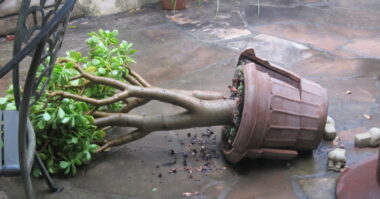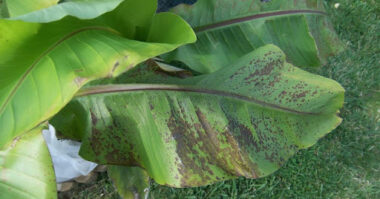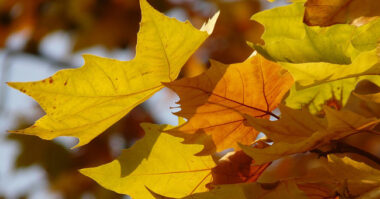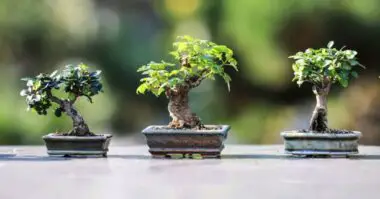Is your palm tree in bad shape? Are its palms perforated? Its heart is devoured and the palm withers? You think your palm is dying? We explain everything, the diseases, how to treat them, and the different predators!
Contents
Palm diseases
In case of inadequate or insufficient maintenance, it can happen that your palm trees are attacked by pests or are sick. Various remedies exist, whether biological, biotechnical or chemical methods, which can help your palms regain their health. 9 times out of 10 it is recoverable unless you really waited too long.
Red Palm Weevil (Rhynchophorus ferrugineus)
The red weevil is well known for its misdeeds especially on Phoenix canariensis (the date palm of the Canary Islands). This beetle is 2.5 cm long in the adult stage, red in color with black stripes, has a long rostrum allowing it to dig a hole in the stipe where it settles. Once inside, the weevil nibbles on the palm tree that it finds to its liking, it loves what is sweet or even fermented.
Its larvae, cream-colored, also feed on the plant, they dig galleries that destroy the plant from the inside and promote rot. The first symptoms of their presence appear long after they are installed, the palms become deformed, dry and then fall off, then a foul odor and a brown liquid comes out of the stipe. Once the beast is installed in the plant, the plant can die within 2 years.
Nematodes are natural predators of palm pests (red weevil and palmivorous butterfly). They are a natural and effective means of controlling these pests.
The palm butterfly (Paysandisa archon)
The palmivorous butterfly attacks the Phoenix, Chamaerops, Trachycarpus and Washingtonias. This large butterfly with a wingspan of 10 cm in the adult stage, has green-bronze forewings and orange hind wings marked with white and black.
It is these larvae, large whitish caterpillars 7 cm long, which cause great damage by devouring the inside of the stipe. Symptoms of their presence are yellowing and drying of the perforated fins, and holes at the base of the rachis. A major attack can lead to the death of the palm tree.
Palm moth (Pseudarenipses insulare)
It is a cream-colored butterfly of 3 cm wingspan with narrow forewings. It is mainly found on palms already weakened by other pests or diseases. It is its brownish caterpillars, which eat the inflorescences and tender tissues of the palms, that do a lot of damage. The symptoms of their presence are the total destruction of the inflorescences and holes at the base of the rachis.
The red spiders
Red spiders attack indoor palm trees and develop webs on the back of the palms. This often results in a discoloration of the foliage.
3 Ways to bring a Palm Plant back to life
1. Biological remedies
Use nature to fight the diseases of your palms! The use of plant-based insecticides or the use of beneficial insects in winter gardens and greenhouses is recommended to eliminate harmful insects. You can order these predators by mail order; place them directly on the plant, taking care to keep a minimum temperature and sufficient humidity (otherwise your insects will not really have time to do their job).
2. Chemical Remedies
Generally to be used as a last resort and sparingly, the use of chemical remedies and pesticides should only be used in outdoor environments. You can obtain these insecticides at specialized stores or, with a little luck, at your local hypermarket. Be careful to read the instructions for use and to respect the doses. The survival of your palm tree may depend on it and may be harmful to the environment.
3. Biotechnical remedies
In total respect for the environment, these remedies use lures to attract harmful insects in specially dedicated traps. Nevertheless, to ensure the success of such methods we recommend that you use them indoors to avoid attracting a plethora of insects that are not necessarily harmful to your plants.
The cold snap
Following a too harsh winter, your palm trees were poorly protected and froze. If it is planted in the ground, the depth of the roots may give you a little hope that something will start growing again in the spring, but if the trunk has suffered too much (especially in the heart of the palm tree, where the new growth is born) it may rot and never grow again.
If the winter is not yet over, take the opportunity to install specific heating blankets on the trunk of the palm tree (these blankets heat just enough to have a temperature slightly above 0°) and if you haven’t already done so, protect the leaves to prevent snow from falling into the heart of the plant.
The plant ran out of water
Of course, the first thing to do is to water! Water very abundantly, until your pot overflows. The holes at the bottom will drain the excess water and discharge it outside, which will ensure that you have a very wet clod of earth. Repeat the same operation 24 hours later with very little fertilizer and make sure that the soil is always wet for at least 8 consecutive days.
If after this time there is no improvement or green growth in the center of the palm, there is not much more to do. As you don’t have much left to lose, you can always try to transplant it into the ground (although it is always not advisable to stress a plant, especially when it is dying, at least you will be able to see the state of the roots), some palms that were thought to be definitively dead have managed to recover thanks to this solution.
Take the opportunity to review the climatic conditions of your palm to readapt its environment (sun, heat, humidity, etc…).
Summary
Palms are generally robust and not very susceptible to disease. However, if growing conditions are unsuitable for them, or if they are weakened by pests or unfavorable climate, some diseases can affect them.









